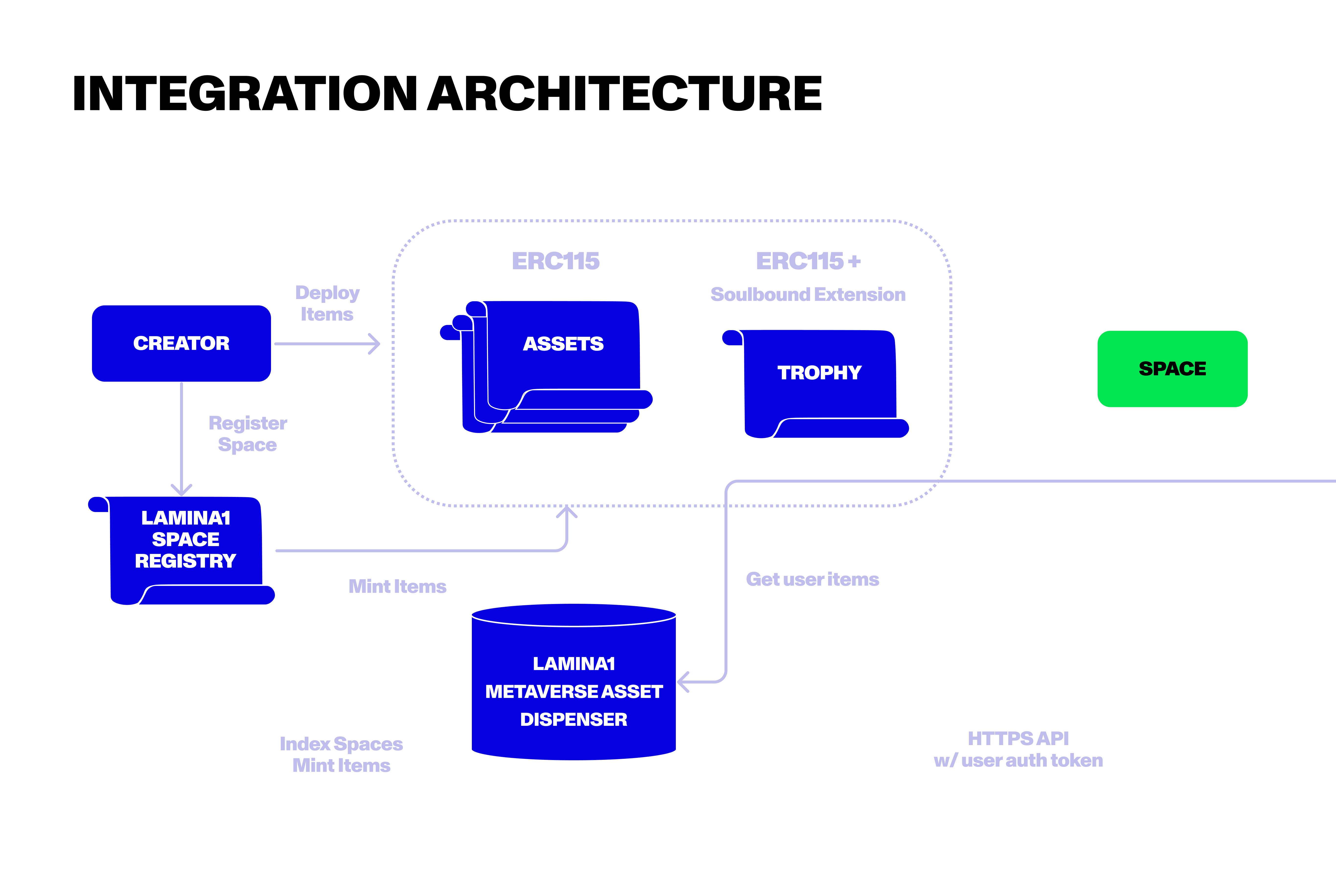Integration Architecture
The diagram below is a visual representation of how metaverse Items are created, distributed, and stored on Lamina1:

We’ll begin here by defining this architecture’s primary components:
The Creator is whomever has initial ownership of the metaverse item, and is responsible for bringing the item or collection into the Space. This can be multiple parties, in the event that the game developer is not the same person as the item designer. This person(s) chooses a smart contract, fills it out with necessary information, and deploys, or works with Lamina1 to deploy said contract(s) to the blockchain.
The Space is the metaverse experience that items are being deployed within. As explained in Lamina1 Spaces, an Overview, these Spaces are completely built and determined by the developer using the game engine, creator tooling, and code-sets of their choice.
The Lamina1 Space Registry (L1SR) is an on-chain smart contract where creators register their space and the list of assets and trophies defined in the deployed smart contracts. The creator can then “program” the achievements in the Registry (e.g. defining that a given asset gets unlocked once a number of points is reached by the user).
The Lamina1 Metaverse Asset Dispenser (L1MAD) The Lamina1 Metaverse Asset Dispenser (L1MAD) is a server that handles interactions on behalf of the Space and its users. When a given user reaches a number of points, the Space performs an API request to the L1MAD, which will then lookup and validate the achievement based on the logic defined in the Space Registry. If all is valid, then the L1MAD will mint the asset to the user.
Now that you understand the underlying infrastructure, continue on to learn about the future of Item, Template, and Space integration on Lamina1.